Two large studies of case-parent trios ascertained through a proband with
a non-syndromic orofacial cleft (OFC, which includes cleft lip and palate,
cleft lip alone, or cleft palate alone) were used to test for possible
gene-environment (G × E) interaction between genome-wide markers (both
observed and imputed) and self-reported maternal exposure to smoking,
alcohol consumption, and multivitamin supplementation during pregnancy. The
parent studies were as follows: GENEVA, which included 1,939 case-parent
trios recruited largely through treatment centers in Europe, the United
States, and Asia, and 1,443 case-parent trios from the Pittsburgh Orofacial
Cleft Study (POFC) also ascertained through a proband with an OFC including
three major racial/ethnic groups (European, Asian, and Latin American).
Exposure rates to these environmental risk factors (maternal smoking,
alcohol consumption, and multivitamin supplementation) varied across
studies and among racial/ethnic groups, creating substantial differences in
power to detect G × E interaction, but the trio design should minimize
spurious results due to population stratification. The GENEVA and POFC
studies were analyzed separately, and a meta-analysis was conducted across
both studies to test for G × E interaction using the 2 df test of gene and
G × E interaction and the 1 df test for G × E interaction alone. The 2 df
test confirmed effects for several recognized risk genes, suggesting modest
G × E effects. This analysis did reveal suggestive evidence for G × Vitamin
interaction for CASP9 on 1p36 located about 3 Mb from PAX7, a recognized risk gene. Several regions gave suggestive evidence of G × E
interaction in the 1 df test. For example, for G × Smoking interaction, the
1 df test suggested markers in MUSK on 9q31.3 from meta-analysis. Markers near SLCO3A1 also showed suggestive evidence in the 1 df test for G × Alcohol
interaction, and rs41117 near RETREG1 (a.k.a. FAM134B) also gave suggestive significance in the meta-analysis of the 1 df test
for G × Vitamin interaction. While it remains quite difficult to obtain
definitive evidence for G × E interaction in genome-wide studies, perhaps
due to small effect sizes of individual genes combined with low exposure
rates, this analysis of two large case-parent trio studies argues for
considering possible G × E interaction in any comprehensive study of
complex and heterogeneous disorders such as OFC.
facebooktwitterLinkedIninstgramyoutubeFollow @kidsfirstdrc EMAIL KIDS FIRST Privacy Policy Cookies
The Kids First Data Resource Center (“DRC”) comprises partnered institutions supported by the NIH Common Fund under Award Number U2CHL138346 as part of the Common Fund’s Gabriella Miller Kids First Pediatric Research Program (“Kids First”). All content, terms and conditions and policies associated with the DRC Portal and Website (the “Services”) are produced by the DRC. The views and opinions of authors expressed on the Services do not necessarily state or reflect those of the National Institutes of Health (“NIH”) or the U.S. government. Furthermore, the NIH does not endorse or promote any DRC entity or any of its products or services nor guarantees the products, services, or information provided by the DRC.
© 2025 Gabriella Miller Kids First Data Resource Center. All rights reserved.
- About
- About
- Kids FirstA collaborative pediatric research effort, Kids First seeks to drive understanding of the genetic causes and links between childhood cancer and structural birth defects.
- CommunityA caring coalition of community foundations and childhood health nonprofits stands behind the continued success of the Kids First Data Resource Center.
- FAQsDiscover answers to common questions about the data, tools, and resources you can apply to empower childhood cancer and rare disease research.
- About Kids FirstKids First Data Resource Center enables researchers, clinicians, and patients to work together to accelerate research and promote new discoveries for children affected with cancer and congenital disorders.
- About
- Resources
- Portal
- DataAccess an extensive collection of quality genomic and clinical data harmonized by the Kids First Data Resource Center.
- ToolsCloud-based tools aid researchers in exploration, discovery, analysis, and study for a deeper understanding of childhood cancer and rare diseases.
- PublicationsRead about the tremendous strides made possible through valuable research contributions informed by Kids First data.
- StudiesEmpower your research through Kids First Data. Discover the robust collection of childhood cancer, congenital disorder, and cross-condition data available now.
- Help CenterGet your research started or move ahead with the help of the Kids First Data Resource Center.
- Portal LoginRegister or login to the Kids First Portal.
- ResourcesThese datasets are harmonized with best-practice open-source pipelines developed by the Kids First Data Resource Center team based on deep experience with pediatric data and community feedback.
- Portal
- News
- Language
- PORTAL LOGIN






